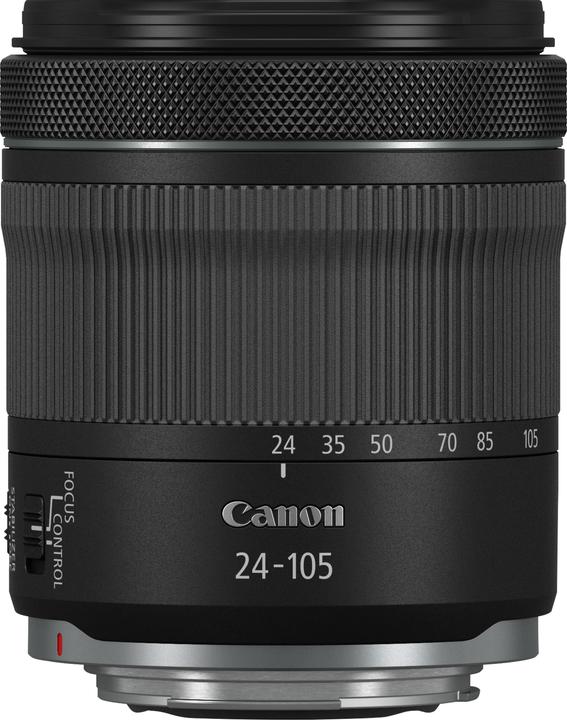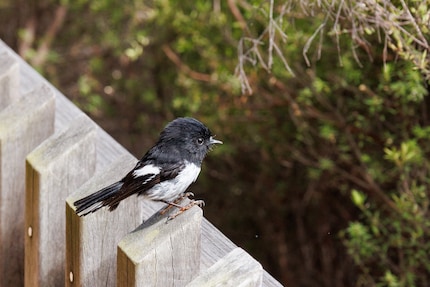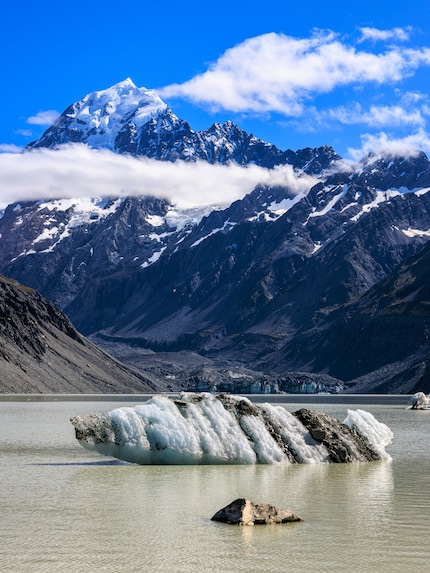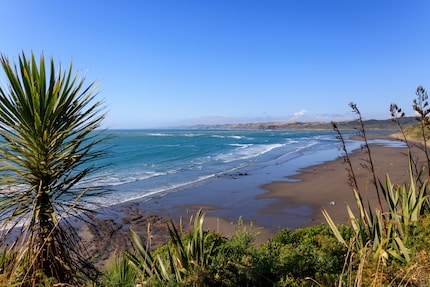

A snapshot: 5 months travelling with a cheap lens
I took the inexpensive Canon RF 24-105 mm f/4.0-7.1 with me as a stopgap on a long trip. Surprisingly enough, it became my favourite lens. Even its supposed drawbacks barely get in the way of landscape photography.
The Canon RF 24-105 f/4.0-7.1 is an affordable all-purpose lens. Canon also offers the same focal length with a continuous f/4 aperture. This lens is more expensive and heavier but in most cases the better choice. That being said, I still opted for the cheaper model as it lets me take zoomed in photos. The closest focussing distance is just 20 cm, which is helpful when I want to show a detail for a review or when a product is very small. By way of comparison, the shortest distance with the f/4 lens is 45 cm.


Canon RF 24-105mm f/4 L IS USM
Canon RF, full size
When travelling around New Zealand for a few months, I should probably have chosen the more expensive lens. But since I already had the cheap one, I took that with me. I didn’t expect to use it that often.
How wrong I was.
The lens of choice for three quarters of all photos
Of the 2,925 photos from my trip, I took 2,136 with the 24-105 mm. That’s almost three quarters. I used the 100-400 mm second most often, mainly for wildlife shots. Meanwhile, the wide-angle 14-35 mm was reserved for just 211 photos – I even took more photos with my iPhone. The wide angle is a high-quality L lens that I’d bought specifically for landscape shots on my trip.
In case I needed a large aperture, I also took the 50 mm f/1.8 with me. I ended up only taking five photos with it, four of them cat portraits.
But why did I use the cheap lens so often? The first reason is pretty banal. The 24-105 mm focal length is the most versatile of my lenses. And I rarely need a wide angle of less than 24 mm for landscape photography. Even if the scenery were compatible, extreme wide angles require careful alignment and composition. The medium focal length range is much better suited for spontaneous shooting.
I was too lazy to keep changing lenses
The second reason is linked to the first: I’d have needed to attach the 14-35 mm to the camera for individual photos. Changing lenses on the road was more of a hassle than I wanted to admit beforehand. I was often out hiking in the countryside with the lens in my rucksack. Switching it meant:
- taking off and opening my backpack
- removing the lens (possibly also other things if it wasn’t right at the top)
- finding a place to put that lens down
- releasing the lens cap with one hand (holding the camera in the other)
- taking the current lens off the camera
- finding a place to put the lens down
- attaching a new lens onto the camera
- putting the protective cap back onto the removed lens
- stowing away the lens I just removed
- closing my rucksack and putting it on.
Quite the process. I only did it if there was a very good reason. Otherwise I left the most versatile lens on, and that was the 24-105 mm.
So much so that I even sometimes used it for taking shots of small birds instead of switching to the 100-400 mm. I was helped by the fact that birds in New Zealand are less shy than in Europe.

The lens’s flaws hardly bother me
The third reason is the most amazing: I quickly realised I was actually satisfied with the image quality. Of the 2,136 pictures, there are only a few that would’ve turned out better had I used a high-quality L lens.
I shoot with a Canon EOS R5, which boasts 45 megapixels and therefore is quite demanding when it comes to lens sharpness. With the 24-105 mm low-cost lens, most of the image is sharp, even with this high resolution. Compared to the SLR era, this is astonishing. But times have changed. Given the shorter flange focal distance on a system camera compared with an SLR, it’s now easier to produce good image quality. This also comes alongside advances in technology.

Obviously, I took another close look for this article – and yes, I admit the images could be a bit sharper. However, obsessively zooming in on photos to discover any flaws, also known as pixel peeping, quickly becomes a kind of obsessive-compulsive disorder – especially if you only end up displaying photos on your smartphone.
The lens only shows a visible blur in the corners, and even then only in wide angles. However, I only see this weakness as purely theoretical, since the corners of the picture hardly ever have anything that should be sharp. In landscape shots, for instance, the corners are often featureless, with a blue sky at the top. There’s some structure in the lower corners, but this would be blurred even with a high-quality lens as it’s not in focus.

You probably don’t get any really bad lenses today that are out of focus even in the centre of the image. At least, not from well-known manufacturers. A key experience for me was when I tried out the Nikkor Z 16-50 mm at the end of 2019. I could hardly believe that this cheap, 135 g plastic thing was sharper than my beloved, not-at-all-cheap SLR lens.
Even more theoretical are its other weaknesses such as vignetting and distortion. This is all corrected automatically in the camera’s viewfinder and later in Adobe Lightroom. Even in RAW format. If I switch off these corrections manually in Lightroom, I can already see a difference. But why would I do that?
But what about the aperture?
On the spec sheet, the maximum aperture of f/4 to f/7.1 looks daunting. But here, too, hands-on experience with the device has shown me that’s not the case, certainly not for landscape shots. The photo is almost always bright enough, and the lens has a powerful image stabiliser, perfect for my shots taken in a dark forest. A narrow aperture would only be a problem for portrait photos. That being said, I didn’t take any portraits on my trip – and even if I had, I still would’ve had the 50 mm lens to hand.
Verdict: price isn’t the deciding factor
The usefulness of a lens doesn’t depend on its price. It’s more about whether it’s tailored to your intended use. In my case, for example, maximum aperture and edge sharpness weren’t important. However, these are two things that drive up the price of a lens considerably.
So my tip is: don’t get bogged down in pixel peeping and instead find out which aspects are really important to you in a lens and which aren’t. In order to know exactly what you’re looking for in a camera, you need to take a lot of photos. And don’t forget that if the results are completely unsatisfactory, it’s very rarely down to the equipment.
My interest in IT and writing landed me in tech journalism early on (2000). I want to know how we can use technology without being used. Outside of the office, I’m a keen musician who makes up for lacking talent with excessive enthusiasm.
Interesting facts about products, behind-the-scenes looks at manufacturers and deep-dives on interesting people.
Show all

